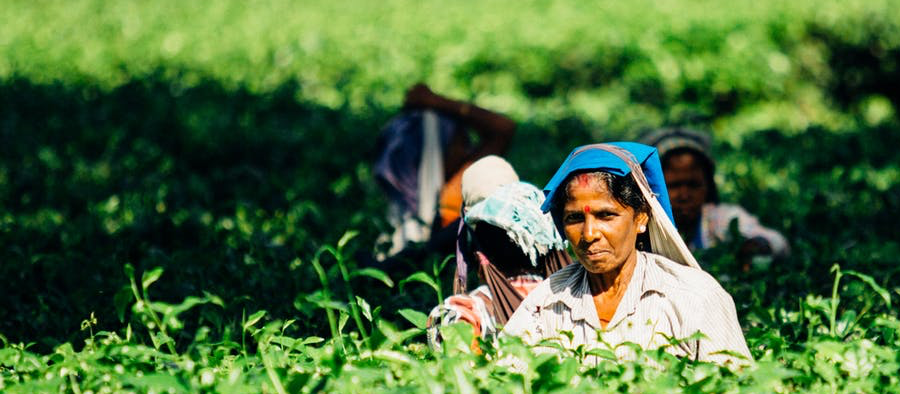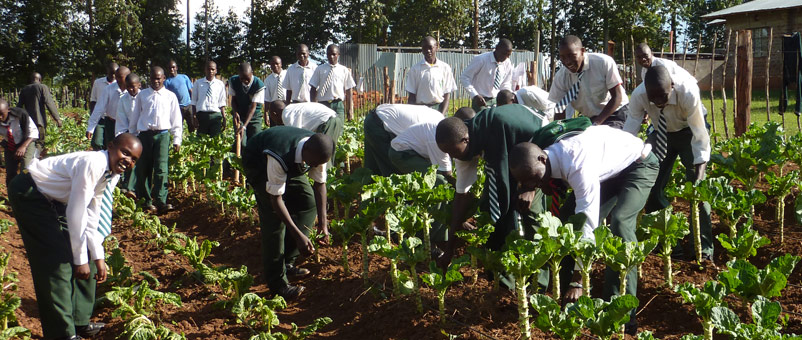It took weeks for water to reach Chennai. When it arrived, it did not come by rain, but by train. In July 2019, the water crisis had escalated to such an extent that the water from the Mettur Dam, one of the country’s largest water reservoirs, had to be transported to Chennai in more than 50 wagons.
Chennai, along with other major cities like Delhi, Bengaluru and Hyderabad, have found their water supply threatened by the mismanagement of groundwater resources. City administrations have performed poorly in groundwater management and ensuring the protection of freshwater resources from encroachment and pollution. This is further exacerbated by the challenges farmers face with climate change; India ranks 6th in the Global Climate Risk Index.
With 90 per cent of the country’s freshwater reserves flowing into agriculture, the Indian agricultural sector must take steps to conserve this precious resource or risk the food security of millions.
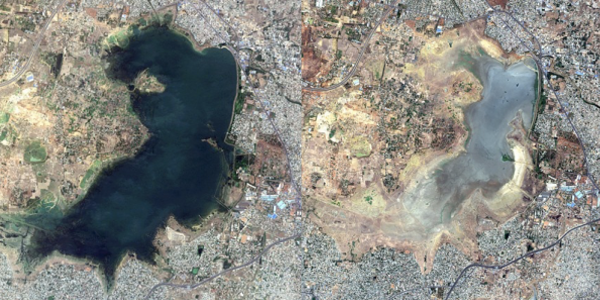
This satellite image shows the Puzhal water reservoir in Chennai in June 2018 (L) and April 2019 (R). Photo: 2019 Maxar Technologies, Associated Press
India’s Water Supply Dilemma
The Green Innovation Centre India works to support India’s smallholder farmers in accessing innovations along the agri-value chain for staple crops like tomato, potato and apple. One project explored water use and found that water is being mismanaged due to the fact that electricity is subsidised for farmers. Farmers are prone to using excessive water for their new crops which leads to greater groundwater extraction. The power runs constantly, but in unpredictable waves, so many farmers run their pumps and irrigation systems continuously to make maximum use of available electricity The machines then pump continuously and extract more water from the soil than needed. The groundwater level drops until it can no longer be reached by the pumps. So, saving water could also mean saving energy.
Available resources must be planned and preserved to make farming models both sustainable and economical. In terms of irrigation, there are three main challenges that illustrate how ecological and economic success are linked. Firstly, irrigation often has high labour costs, as farmers have to open and close their valves manually. Secondly, the excessive consumption of water reduces the groundwater table. Finally, inefficient or wrong amounts of water can lead to lower yields, higher costs, poor plant health and an increased chance of root disease.
In order to meet these challenges, the Green Innovation Centre India is testing various innovative solutions.
Underground Irrigation
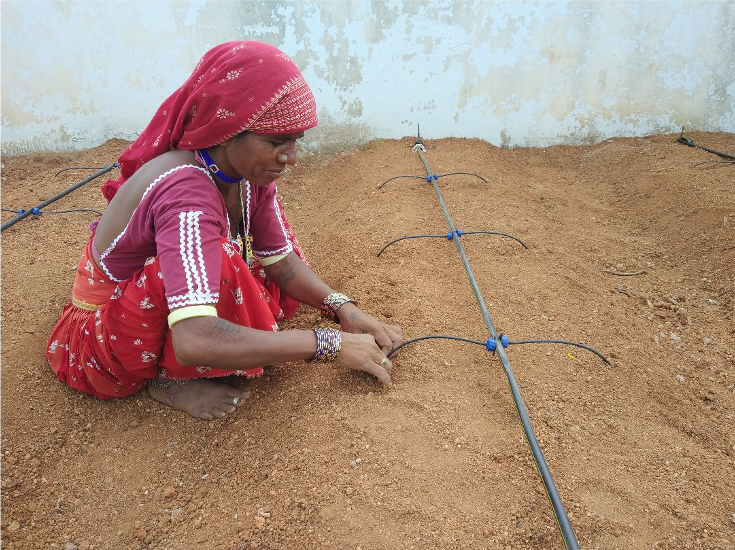
Every few meters, a small pipe runs into the ground and irrigates the plant underground. Photo credit: Centre for Environment Concerns, Hyderabad
Most farmers use drip irrigation to save water. Although it is already a considerable improvement over traditional flood irrigation, there is still room for improvement. Instead of a water outlet on the surface, the new “System of Water for Agriculture Rejuvenation” (SWAR) technology provides underground irrigation. Like drip irrigation, a pipe runs along the field ridges, connected by smaller pipes every few metres which go to the root zone level of the particular crop. A plastic container the size of a golf ball is attached to the end of these small tubes. It has small holes and is filled with quartz stones. When water flows through the pipe and reaches the container, the stones distribute it and let it wet the ground gradually. SWAR technology has been tested on tomato, chilli and saline fields and the results show that this technology increases plant height, number of branches and biomass production with similar levels of yield. The main differentiator is that the technology uses 40 per cent less water, so the farmer saves money and conserves precious water resources.
Precision Irrigation
The automated irrigation system “Water-Hand”, developed by Farm Hand, delivers a precise amount of water at a specific time based on information using the crop’s lifecycle, local weather and soil conditions. This means significantly less water is used than current practices.
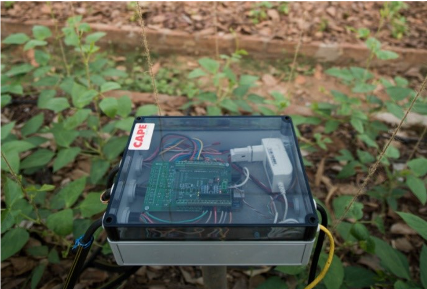
The automated irrigation system “Water-Hand”. Photo credit: Auroville Consulting
The Future of India’s Water Resources
Long-term use is expected to yield significant benefits. These include a 30 per cent increase in yield and a 60 per cent reduction in the amount of water and energy consumed. This is because the technology allows for the right amount of water to be distributed at the right time. As well as this, it should lead to more accurate fertilizer use as over-irrigation is linked to the loss of nutrients which might escape with water runoff. By automating the switching on and off of valves, labour should also be significantly reduced.
India, the world’s largest groundwater user, extracts a dangerously high amount of 250 cubic kilometres of water per year. As water becomes increasingly scarce, this will make the irrigation of fields more difficult and expensive. Innovations that reduce water use by making it more efficient are therefore urgently needed.
The examples of underground and precision irrigation show that the protection of natural resources and market interests can be met at once. Both examples saw the reduction of water consumption, saving energy and money for the farmer.
These sorts of win-win innovations can serve all stakeholders in the agricultural sector as inspiration for new technologies. With a creative and sometimes even simple approach, both the ecological future and economic prosperity of Indian farmers can be strengthened.
The project Green Innovation Centres for the Agriculture and Food Sector – India, is part of the special initiative One World – No Hunger Initiative, commissioned by German Federal Ministry for Economic Cooperation and Development (BMZ) and implemented by Deutsche Gesellschaft fuer Internationale Zusammenarbeit (GIZ) GmbH.


